Affiliate links on Android Authority may earn us a commission. Learn more.
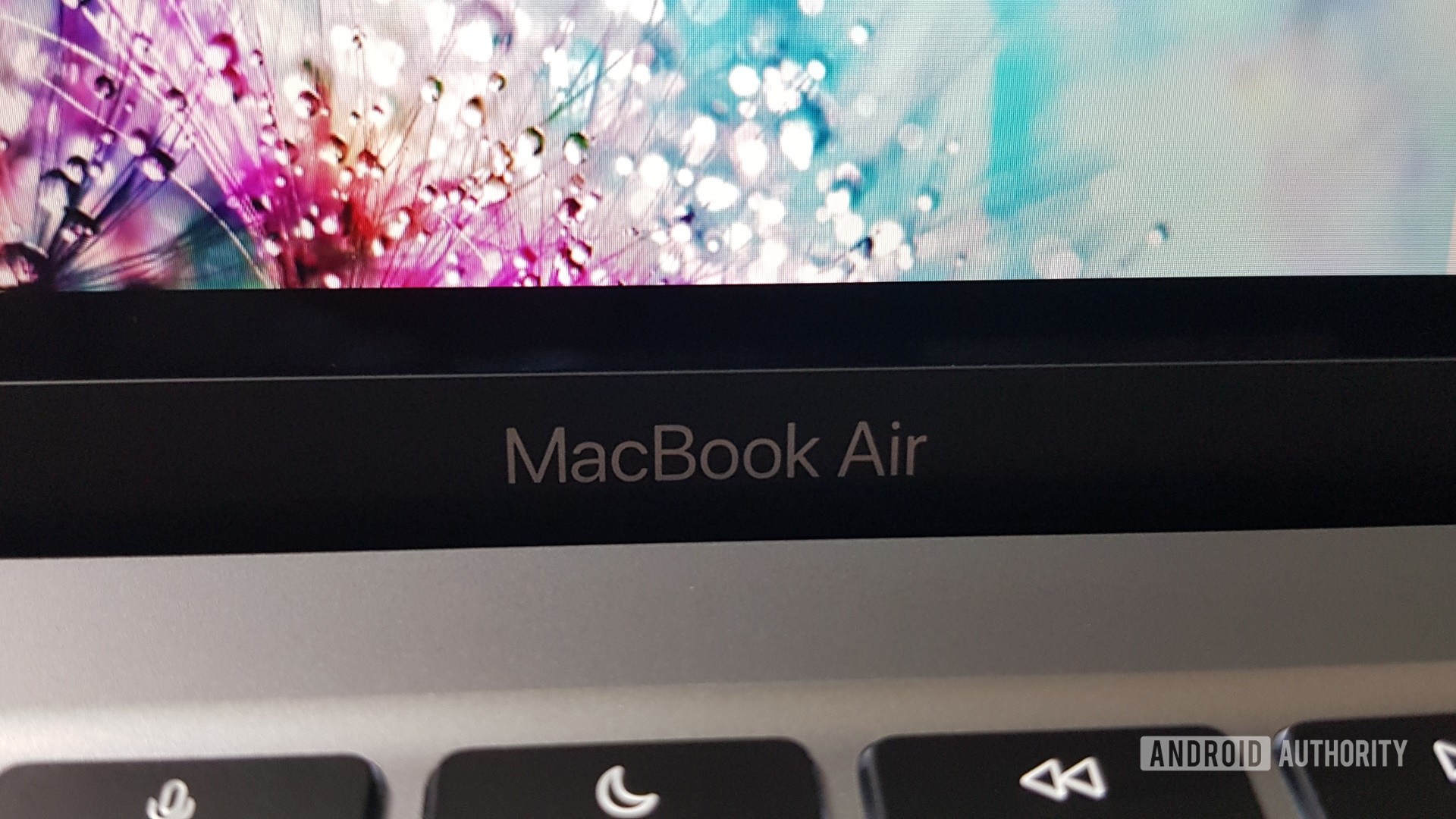

Apple MacBook Air (M1) review: Apple's silicon for Apple's laptop
Published onAugust 31, 2022

Apple MacBook Air (M1)
What we like
What we don't like

Apple MacBook Air (M1)
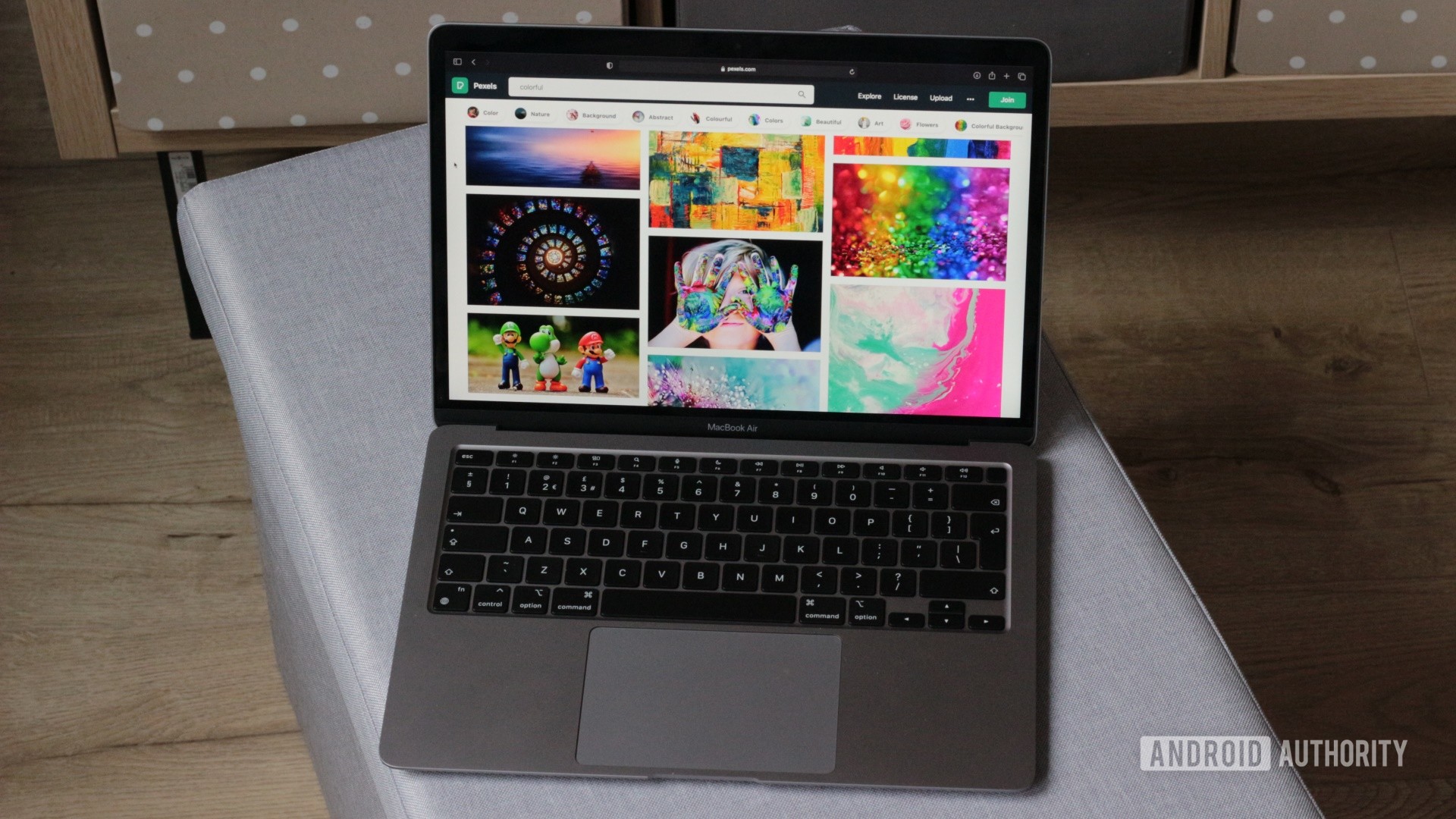
The time Steve Jobs pulled the first MacBook Air out of a manilla envelope has gone down in history as one of those defining Apple moments. The original MacBook Air was a mere 19.3mm (0.76-inches) at its thickest point. It was something previously unheard of for any laptop, let alone an Apple laptop. Here we are 12 or so years later, and the latest MacBook Air is turning heads once again. However, this time it’s not because of its thickness (even though at 16.1mm the latest model is thinner than the original) but because it doesn’t use an x86 processor from Intel (or AMD). It sports Apple’s own processor design based on the Arm Instruction Set Architecture (ISA).
This is a bold move by Apple at a time when laptops in the Windows/Intel (and AMD) space are getting more powerful and offer improved battery life. Additionally, other devices like tablets — including Apple’s own iPad range — often cross over into laptop territory.
But does the new M1 processor offer enough to make people think twice about an Intel or AMD based laptop, running Windows or macOS? Let’s find out.
MacBook Air (M1) review: Who is it for?
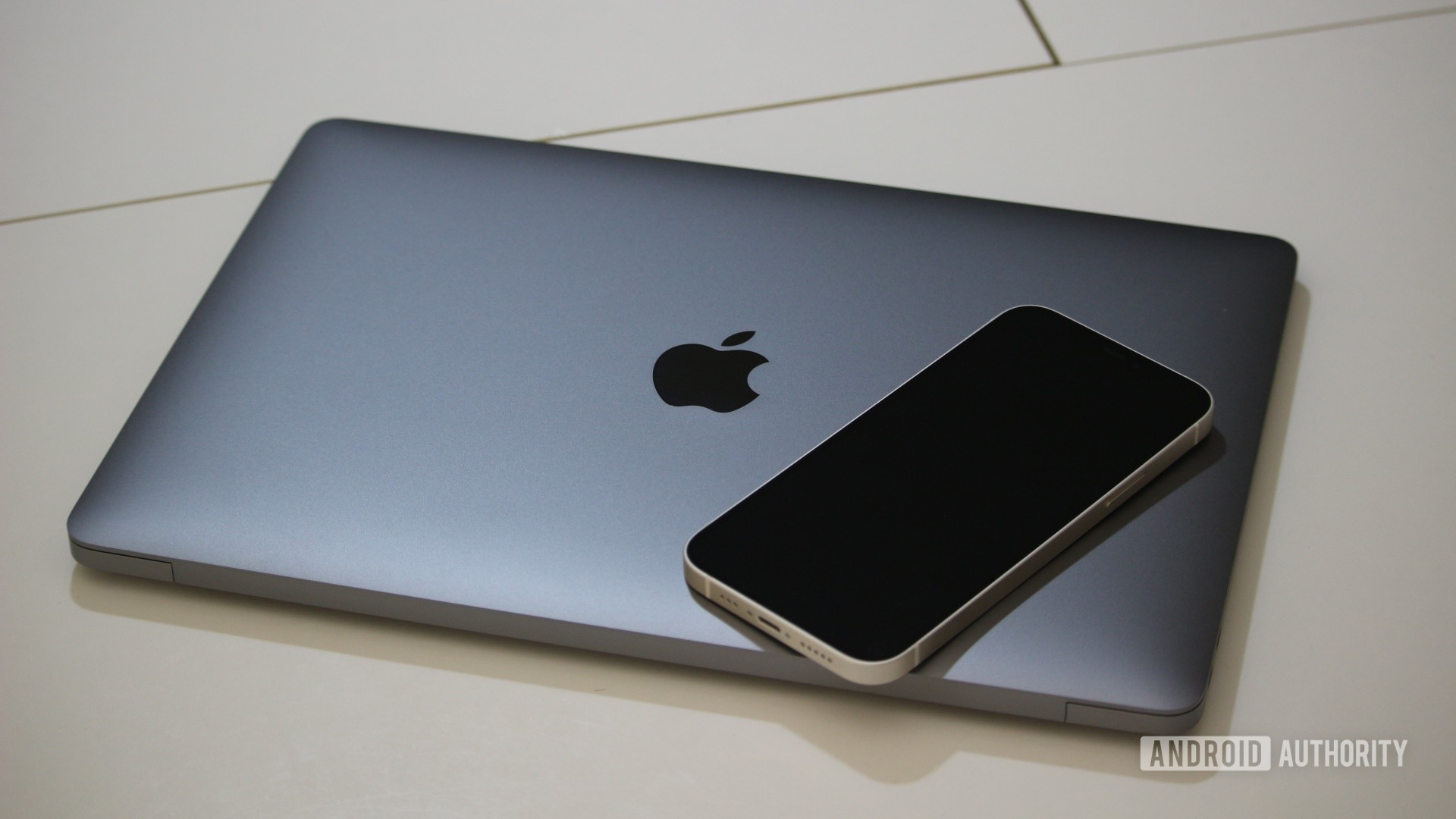
The MacBook Air’s $999 entry price places it into a highly competitive space. Its rivals include some very capable machines, including the ASUS Zephyrus, the Microsoft Surface Book 3, and the Dell XPS 13.
The basic model MacBook Air (M1) comes with a 13-inch display, an Apple M1 chip (with an eight‑core CPU and a seven‑core GPU), 8GB of unified memory, and 256GB of SSD storage.
See also: The best laptops you can buy
The MacBook Air is for two types of people. The first are those who already have a MacBook and are looking for an upgrade. The second are users who have more demanding computing needs including students, creatives, and professionals, especially where the dimensions/weight of the laptop is important, as is the battery life.
Design: Is more of the same OK?
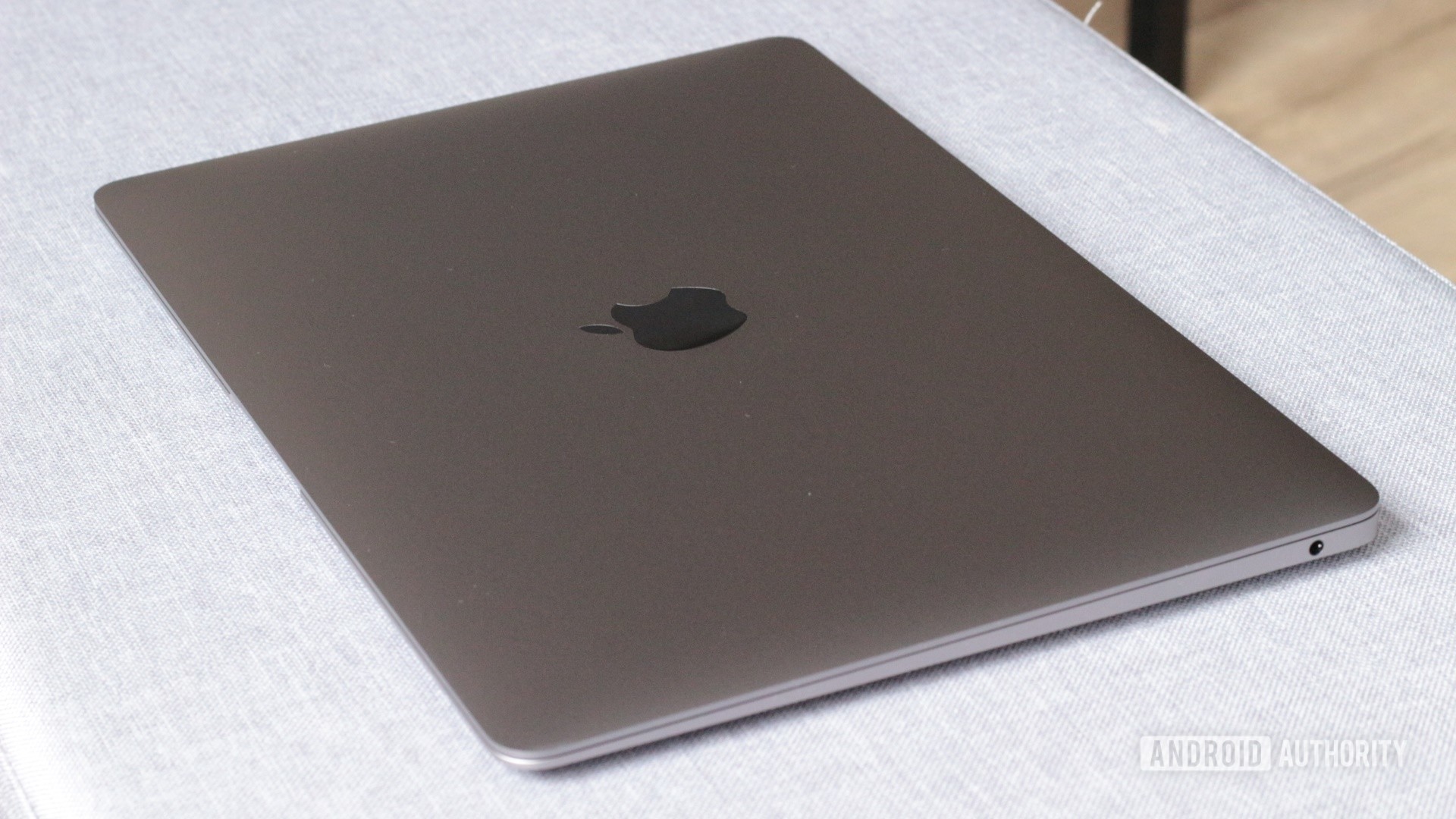
- 30.41cm x 21.24 cm x 0.41–1.61cm
- 1.29kg
- Two Thunderbolt / USB 4 ports
- 3.5mm headphone jack
- Large trackpad
- Magic Keyboard with Touch ID
The MacBook Air (M1) is almost identical to all previous MacBook Airs. If you look at the dimensions and the specification of the display, battery size, speakers, etc., then it would be hard to tell this model apart from its predecessor. Is that a good thing? Probably. The design is what differentiates the Macbook Air from the competition. It is almost “iconic”, and if it ain’t broke, don’t fix it.
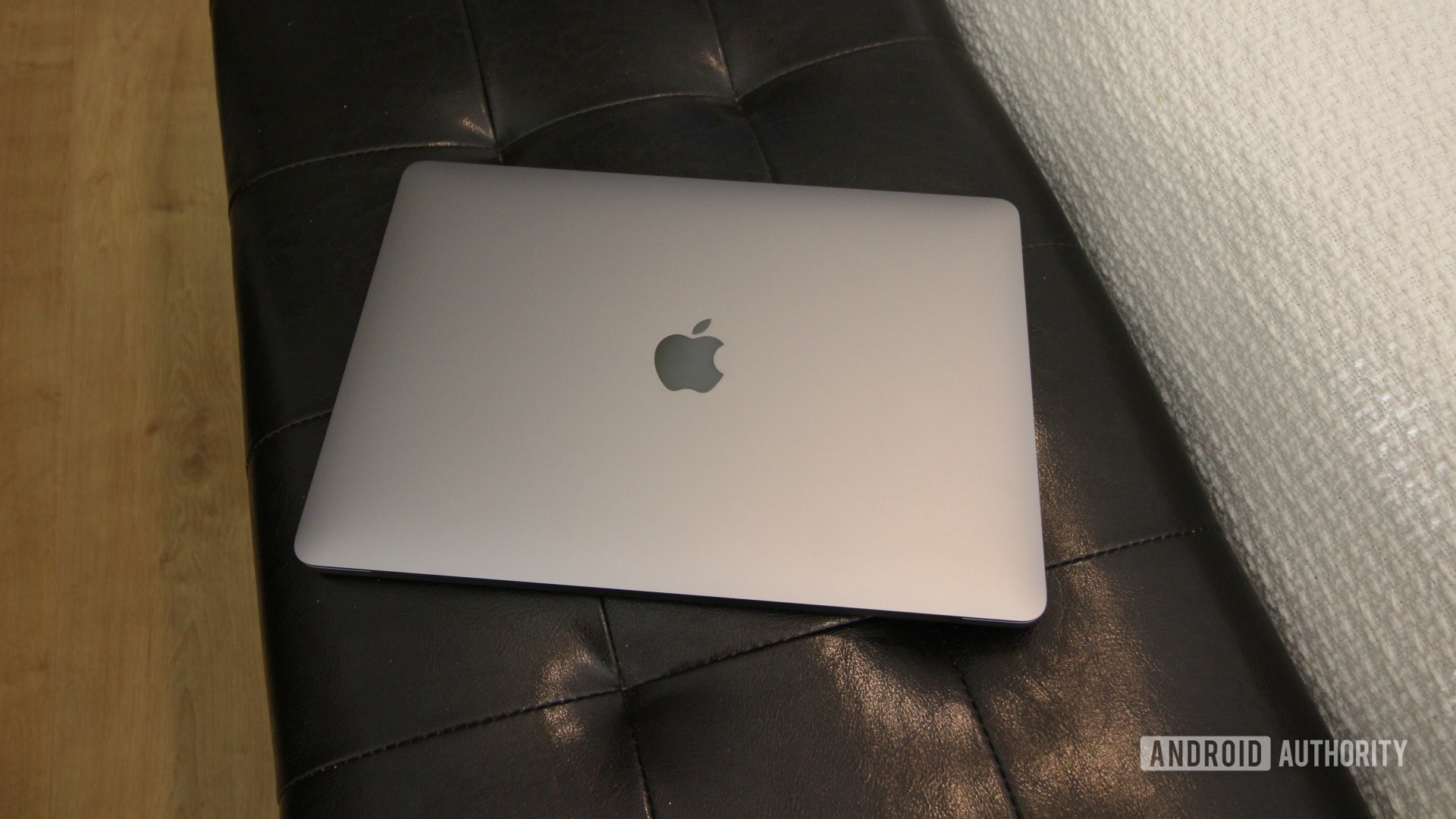
As with the previous generations of the MacBook Air, the aluminum unibody offers a premium feel that can’t be matched by plastic. The brushed texture helps make it less of a fingerprint magnet, however it can catch some smudges.
The latest MacBook Air is turning heads once again, but not because of its thickness.Gary Sims
As you would expect at this price point, the build quality is outstanding. Opening and closing the device is smooth and reassuring. The Apple logo on the lid is a minimalist mirrored emblem, not the illuminated logo found elsewhere.
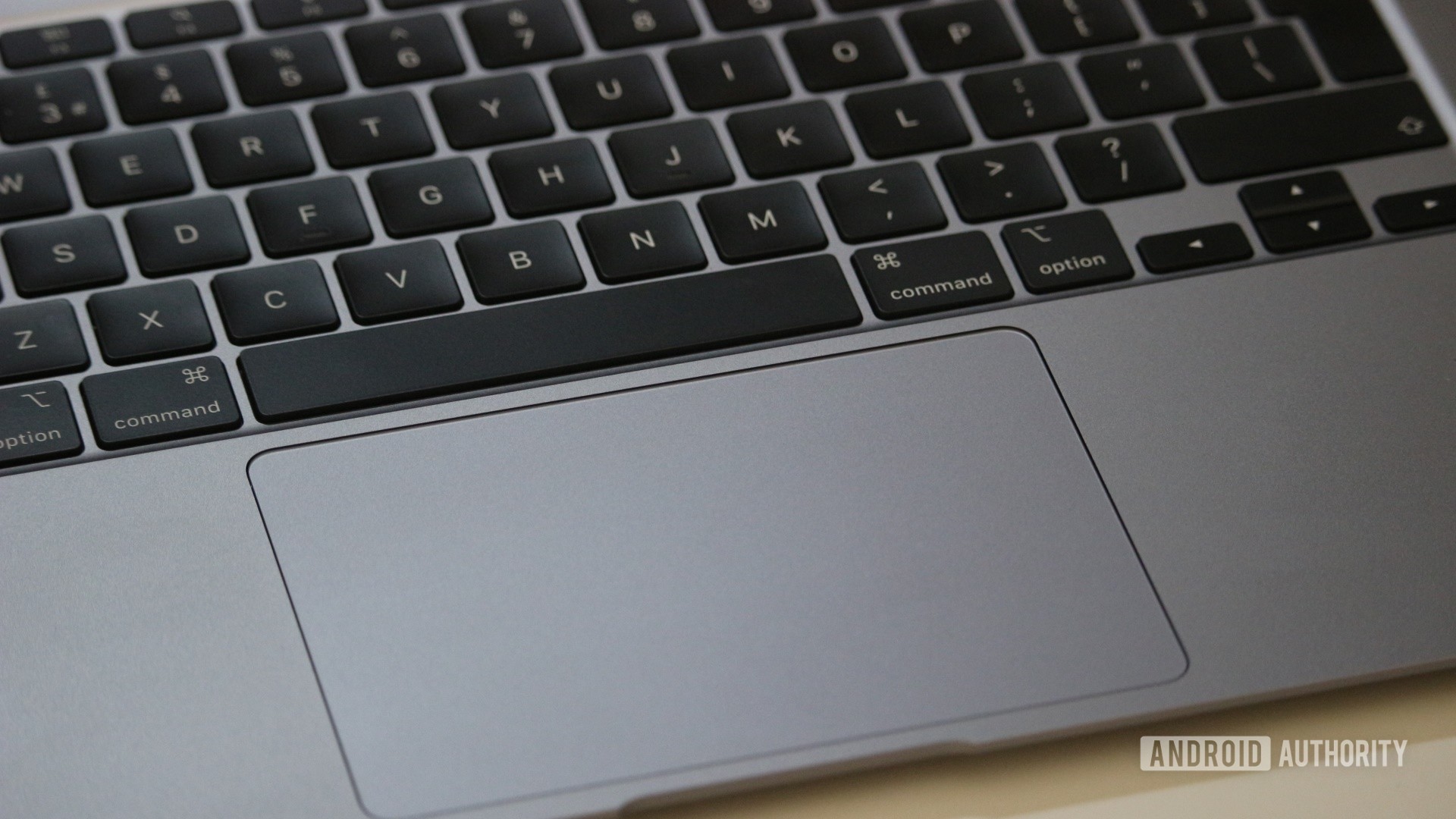
Thankfully, the keyboard of the MacBook Air (M1) uses “scissor” switches rather than the much-abhorred butterfly keys from the 2018 and 2019 models. The new “Magic Keyboard” is much better and offers a superior typing experience. It probably isn’t the very best laptop keyboard, but it is much better than the 2018/2019 offerings. Overall, it’s clicky, provides reasonable feedback, and the key spacing is very comfortable.
Also check out: Apple MacBook Pro (16-inch) long-term review: A true desktop replacement
One difference between the MacBook Air (M1) and the previous Intel-based MacBook Air models is that the dedicated keyboard brightness keys and the Launchpad key have been replaced with keys for Dictation, Spotlight, and Do Not Disturb. This means that you need to visit the Control Center to adjust keyboard backlighting.
There is what appears to be a blank key at the top right of the keyboard near the F12 key. It is in fact the Touch ID key — basically a fingerprint reader. You can add up to three fingerprints. Your biometric information can be used to unlock your MacBook Air, authorize purchases in the Apple TV app or in the App Store, and shop online with Apple Pay. The fingerprint reader is fast and accurate. Using it to unlock my MacBook Air quickly became an essential feature.
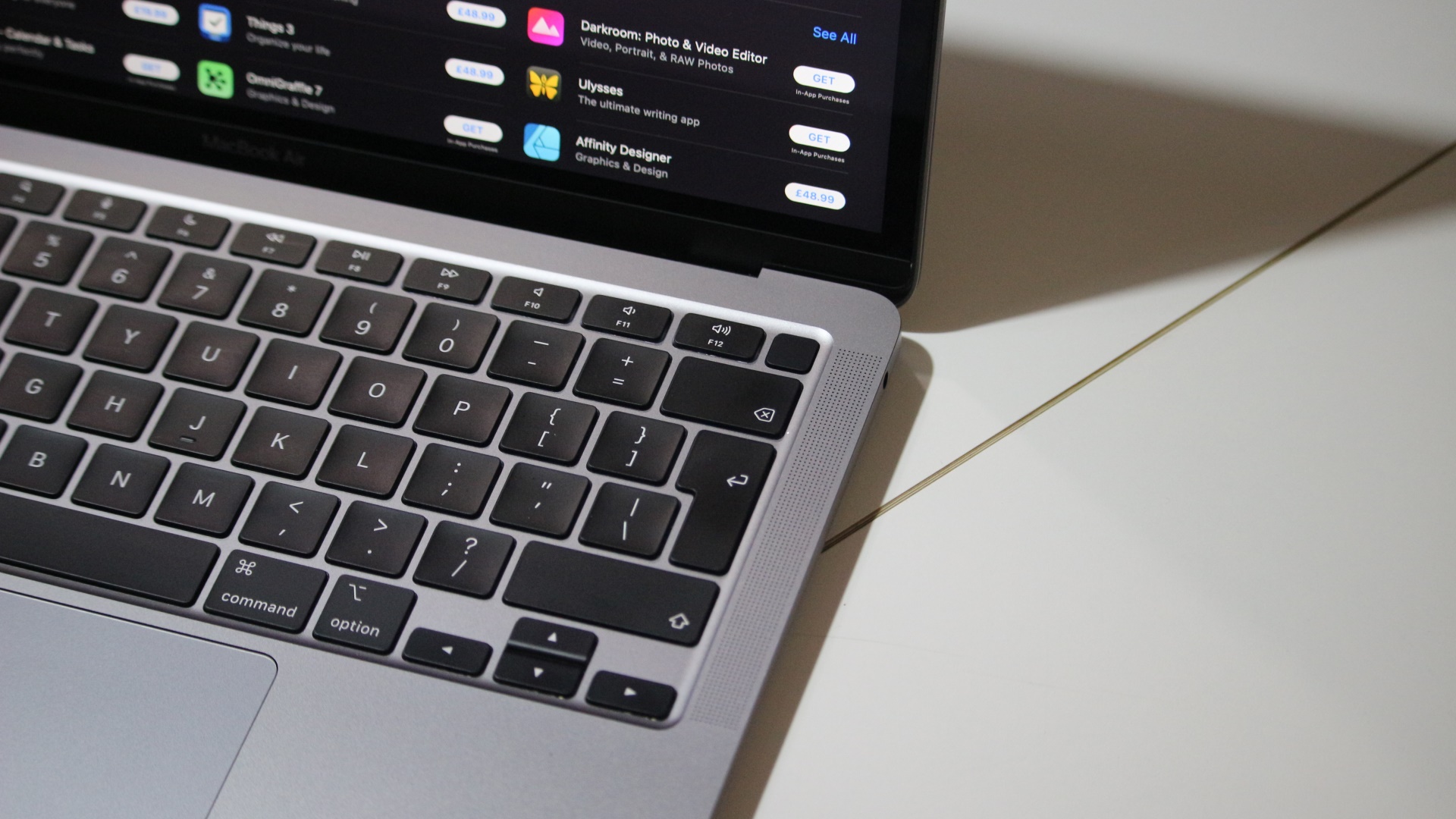
Because I bought a model with a British English Keyboard, I have found one problem. My previous MacBook had a US keyboard and I didn’t even think too much about the differences, beyond the positioning of a few common symbols. However, the UK keyboard has a smaller Return/Enter key. In fact, I find it too small. I keep hitting slash rather than Return! This is quite frustrating. I am sure eventually my muscle memory will change and the number of random slashes appearing in my writing will reduce. Nevertheless, it is something to be aware of if you are buying a MacBook Air internationally.
The Force Touch trackpad met my expectations. The surface is smooth and large enough to make navigation easy. It is actually larger than the trackpad on my older MacBook Pro, and that’s a welcome upgrade.
As with all modern MacBooks, there are a plethora of gestures that allow you to slip and slide around macOS. The “Force” part of the Force Touch trackpad means you can click on the trackpad and then apply more pressure to take advantage of added functionality in some apps and at a system level. For example, you can Force click a file icon to see a Quick Look preview of the file’s contents. You can also Force click text in a webpage to see more information from sources like the built-in Dictionary or Wikipedia.
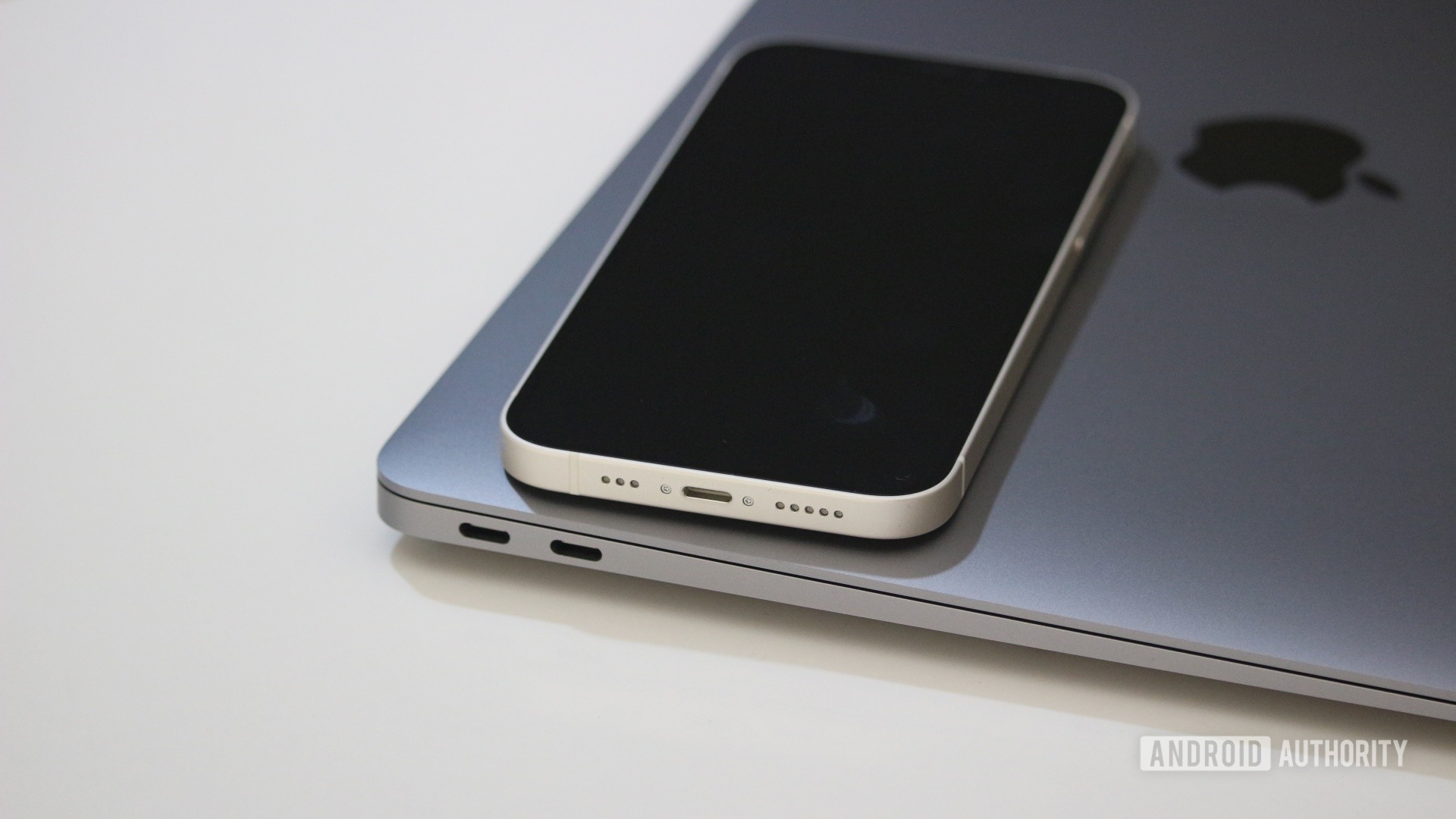
There is one inexcusable issue with the MacBook Air (M1), however: the lack of ports. You get two Thunderbolt 3 / USB ports and a lonely 3.5mm headphone jack. That’s it. If you are charging the device with the supplied USB-C charger then you only have one free port.
There is no SD card reader. No USB OTG ports, no DisplayPort, no HDMI. Granted, the features of those two Thunderbolt 3 / USB ports are superb. You can connect any Thunderbolt 3 device that you want and get up to 40Gb/s transfer speeds. Additionally, you can connect an external 6K display or any USB 3.1 Gen 2 (AKA USB 3.2) device and get up to 10Gb/s. But two ports aren’t enough.
You will most likely need to buy a dock too. There are some nice docking stations on the market that can charge your MacBook Air while giving you an SD card reader, wired Ethernet, extra Thunderbolt ports, extra USB 3.2 ports, a DisplayPort connector, additional audio connectors, and more. But you will need to pay for it. As a minimum, I bought the official USB-C to USB adapter, but I still may yield to temptation and buy a fully-featured dock.
More: The best USB Type-C adapters
What about the display?
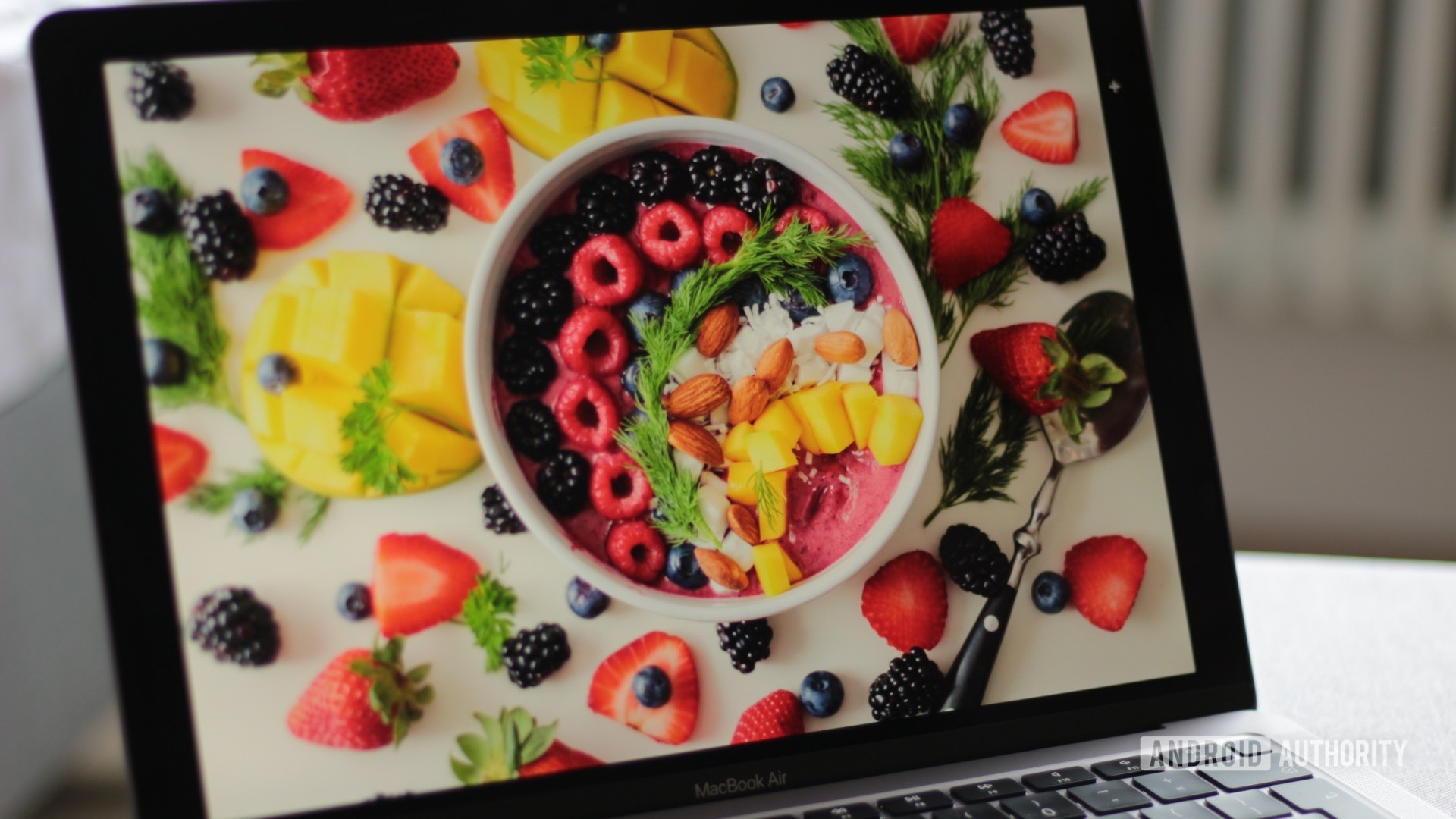
- 13.3-inch IPS LED display
- 2,560 x 1,600 pixels
- 227ppi
- 16:10 aspect ratio
- 400 nits brightness
- Wide color (P3)
- True Tone technology
Apple makes good displays. The MacBook Air (M1) has a 13-inch display with a resolution of 2,560 x 1,600. That means this “Retina” quality display is pretty sharp at 227 pixels per inch. However, pixels aren’t everything. One downside of the MacBook Air compared to some of the bigger MacBooks is the screen brightness. The brightness of the MacBook Air (M1) display tops off at about 400nits. That is good, but not outstanding. The 13-inch MacBook Pro (M1) offers 500nits of brightness, as do many other laptops. Overall, text looks sharp, media plays beautifully, and brightness is sufficient when indoors.
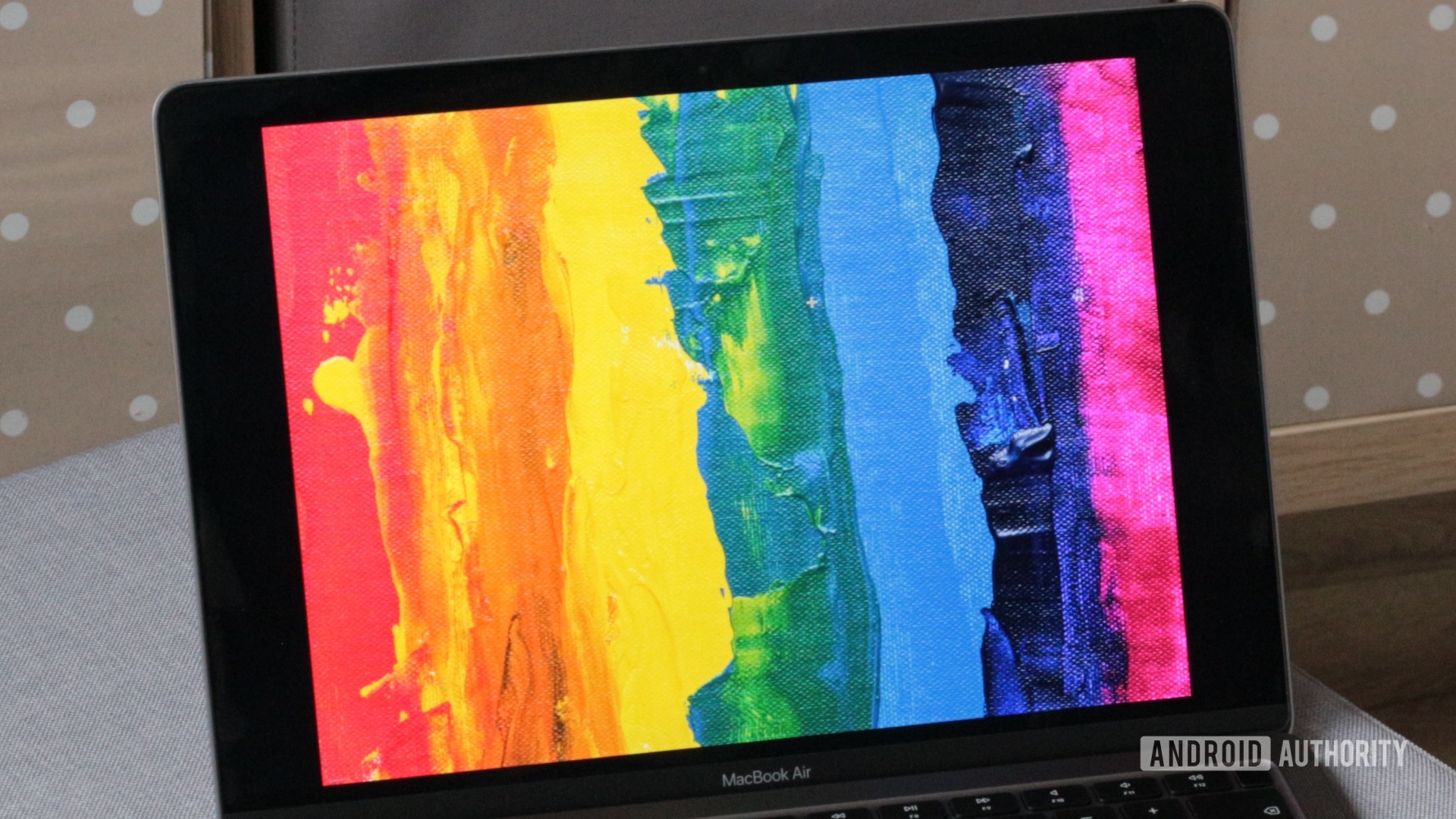
In terms of color accuracy, the MacBook Air offers a DCI-P3 wide color gamut. Those who really care about color accuracy (e.g. photographers) could find this display useful for their workflows.
Apple Silicon, tested
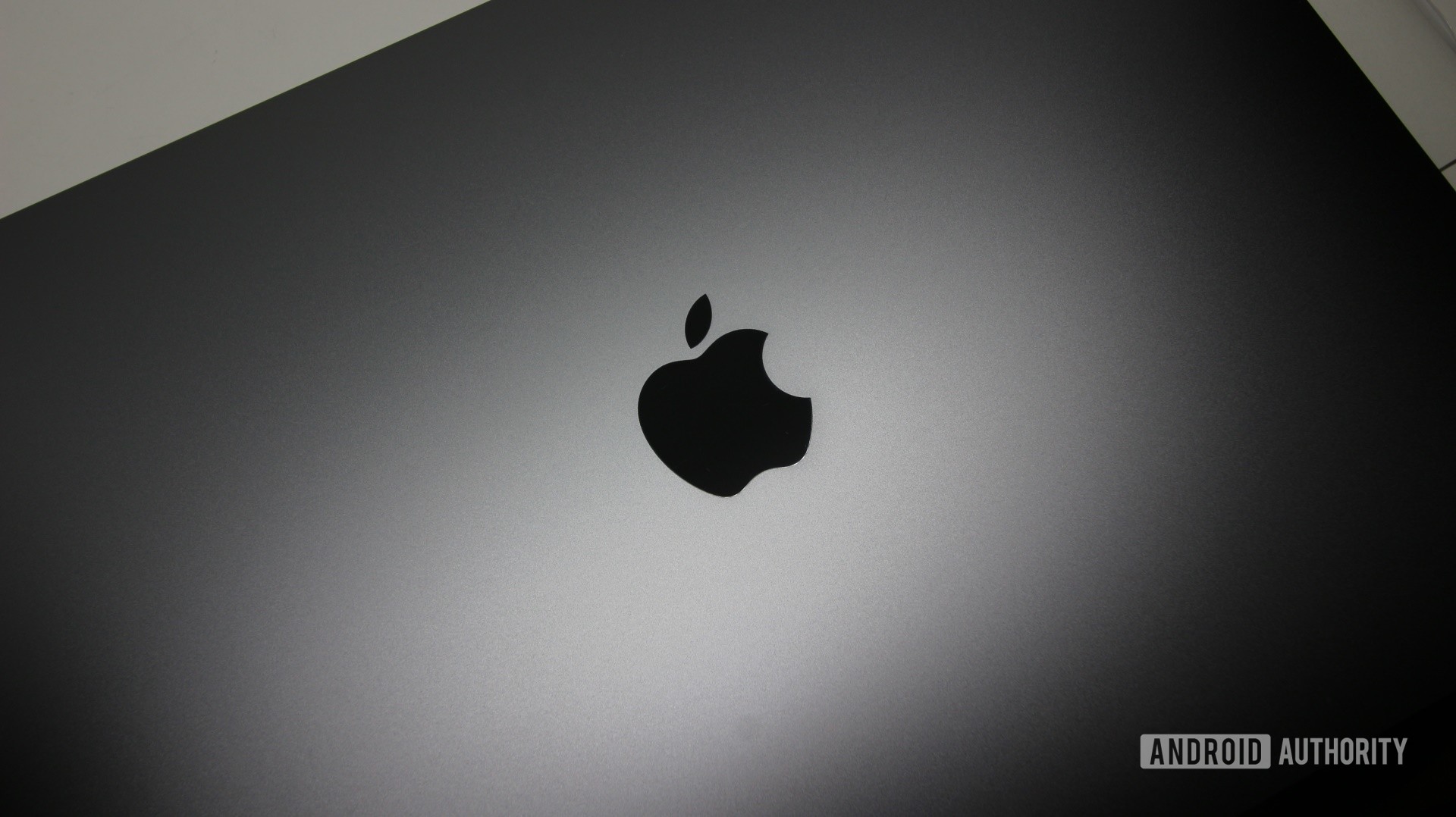
- Apple M1 processor
- Eight-core CPU with four performance cores and four efficiency cores
- Eight-core GPU
- 16-core Neural Engine
- 8GB unified memory (16GB models available)
- 512GB SSD (up to 2TB available)
The biggest difference between the MacBook Air (M1) and all the previous generations of the laptop is that this one doesn’t use an Intel processor. It doesn’t even use an x86 processor from Intel’s rival, AMD. Instead, it sports a custom processor designed by Apple and dubbed “Apple Silicon”. The MacBook Air (M1) is one of the three newly-launched devices with Apple’s processor. The 13-inch MacBook Pro (M1) and the Mac Mini (M1) are the other two.
Apple’s switch to a new processor means lots of things. On the plus side, the company can build processors specifically for the Mac, meaning it has even more control of the “integrated” design process that is the hallmark of all Apple products. The new processors have the potential to offer greater levels of performance while increasing efficiency. We will talk more about both of those aspects in a moment.
Dive deeper: Apple M1 tested: Performance benchmarks and thermal throttling
However, the downside is software compatibility. The Arm and the Intel instruction sets are not compatible. In other words, you can’t natively run software compiled for an Intel chip on the new Arm-based MacBooks. Likewise, you can’t natively run software compiled for Arm chips on the older Intel Macs.
To get around this obstacle Apple is doing three things:
- It has provided all the necessary tools for Mac software developers to recompile their software for Apple Silicon. Moreover, there is a way for developers to build apps that support both systems side-by-side. These are known as “Universal” apps which contain both the code for the Intel version of the software and the Arm version. When a user downloads and installs a Universal app, the system just picks the relevant code and runs it. It should be seamless in that respect.
- Apple offers system-level emulation (binary translation) that allows the new Macs to run the older Intel code. There is a performance hit, as well as a battery hit, however. Compatibility is high, but not perfect.
- The new Macs can run iPad apps. Since the iPhone and the iPad already use Arm-based processors, there is a huge library of mobile and tablet apps that can now run on Macs too. Apple has added the relevant software parts so that the MacBook appears to be an iPad as far as the app is concerned. Nevertheless, not all iPhone/iPad apps are available. The lack of a touchscreen also means the interface can be tricky when trying to mimic taps and finger gestures on the trackpad. While not perfect, it is certainly a useful addition to the Mac ecosystem.
For those wondering if your favorite Mac software will work on the new Macs, there is a great website called Is Apple silicon ready?. It catalogs the most popular Mac software and reports its native support status for Apple Silicon and if the Intel version works under emulation. I have been visiting the site almost daily, and one promising thing is that list of native Apple Silicon apps is growing quickly.
The key question for creators, however, is about Adobe’s suite of apps. All of them run under emulation, including Premiere Pro. Adobe is committed to releasing Apple Silicon versions during the first part of 2021, as well. In fact, Lightroom and Photoshop are already available as native programs. If you use a different photo editing program like Pixelmator Pro, then that is also Apple Silicon ready.
You don’t have to worry about Apple’s own apps. Safari, Pages, Numbers, Keynote, GarageBand, iMovie, and Final Cut Pro all have native versions for the new Macs.
MacBook Air (M1) performance test
Performance measurements can be tricky. On the one hand, getting a feel for the absolute numbers using benchmarks can be useful. On the other hand, how do those numbers translate into everyday tasks like surfing the web, writing documents, editing photo, or streaming a video? It all depends on your use case. Let’s start with the benchmarks.
According to the Geekbench official results, the MacBook Air scores 1690 for the Single-Core test and 7304 for the multi-core test. In terms of single-core performance, the new MacBook is Air is faster than every Intel Mac that exists. Not just every Intel MacBook Air, but every Intel-based Mac. Things are slightly different in the multi-core world as there is some stiff competition. The late 2019 Mac Pro has a 28 core Intel Xeon processor, so the eight-core MacBook Air isn’t going to beat it. However, it does beat every other Intel-based Mac that isn’t a Mac Pro. The only exceptions are the very high-end 27-inch iMacs from 2019 and 2020. Very impressive for Apple’s first laptop processor!
In terms of single-core performance the new MacBook is Air is faster than every Intel Mac that exists.Gary Sims
Cinebench R23 gives the MacBook Air a score of 1515 for single-core performance. That’s better than the Intel Core -7-7700K and the AMD Ryzen Threadripper 2990 and close to the 11th generation Intel Core -7-1165G7. For multi-core, it scores 7326, again beating the Intel Core -7-7700K. However, as with the Geeknench scores, there are plenty of processors with 16, 24, 32, or more cores. These naturally score higher.
Speed Test G PC, a reimagining of Speed Test G — but this time for desktops and laptops — gives the MacBook Air a run time of 56 seconds. That is faster than the 2019 MBP 16-inch with the i9-9980HK, and faster than the 2019 MBP 13-inch with the i7-8569U.
Overall the benchmarks agree that the new M1 processor is fast. Of course, fast is relative as we are essentially talking about a laptop processor that needs to run efficiently off the battery. However, Apple has entered the processor market with a startlingly good offering, and things can only get better. It will be interesting to see what the company has planned for its desktop Macs during 2021.
But what about daily tasks? The good news is that those benchmark numbers translate well into everyday usage. The MacBook M1 feels snappy, responsive, and smooth. It can handle everything that you would expect a previous generation of MacBook Air to do, plus some more!
For example, you can easily run Safari with 20 tabs, the Apple TV app, Pixelmator Pro, Keynote, the App Store, and a Terminal, simultaneously and switch between them (and the tabs). Your workflow will be different, but the MacBook Air handled all my normal tasks. If you need lots of programs open and in memory then the model with 16GB of RAM will be better.
Emulating Intel
If your workflow includes apps that aren’t yet compiled for the M1, will the performance suffer? Surprisingly, no. Tomb Raider (2013) is a 3D game available for Intel Macs and can be downloaded via Steam. I was able to download and install Steam without any problems. Likewise, I was able to install Tomb Raider from my library. The game has a built-in benchmarking mode. Running in full HD (1,920 x 1,080) the game can do 60fps. Remember this is an Intel x86 app running under emulation.
I also ran the Intel x86 version of Speed Test G PC. The first test run finished in 62 seconds, so an increase of 10%. However, the subsequent runs finish in just 58 seconds. Slower than native, sure, but less than 5% slower!
Great read: Best gaming laptops
MacBook Air (M1) battery test
- 49.9Wh lithium-polymer battery
- 30W USB Type-C charger
The battery life you get from your MacBook Air is dependent on several factors. Those include screen brightness, workload, and if the laptop is emulating Intel instructions. A MacBook Air sitting idle (with the screen saver disabled) can last for 32 hours if the screen brightness is on minimum. At 50%, it can sit idle for around 16 hours, and you will get just 8 hours on full brightness. Basically, if you run your MacBook Air at full brightness it doesn’t matter what apps are open or what games you are playing. You will never get more than eight hours. Screen brightness matters.
Apple is quoting up to 15 hours wireless web, and up to 18 hours Apple TV app movie playback (from local storage). This is with the screen brightness at just under 50%. My testing confirms those numbers to be approximately right. Wireless web and video playback are good measures of general productivity. For gaming, I found that I could get about seven hours of Minecraft or Asphalt 9, but a more intensive 3D game like Tomb Raider (2013) — which runs under x86 emulation — drains the battery much faster, in about three hours!
Software: macOS Big Sur
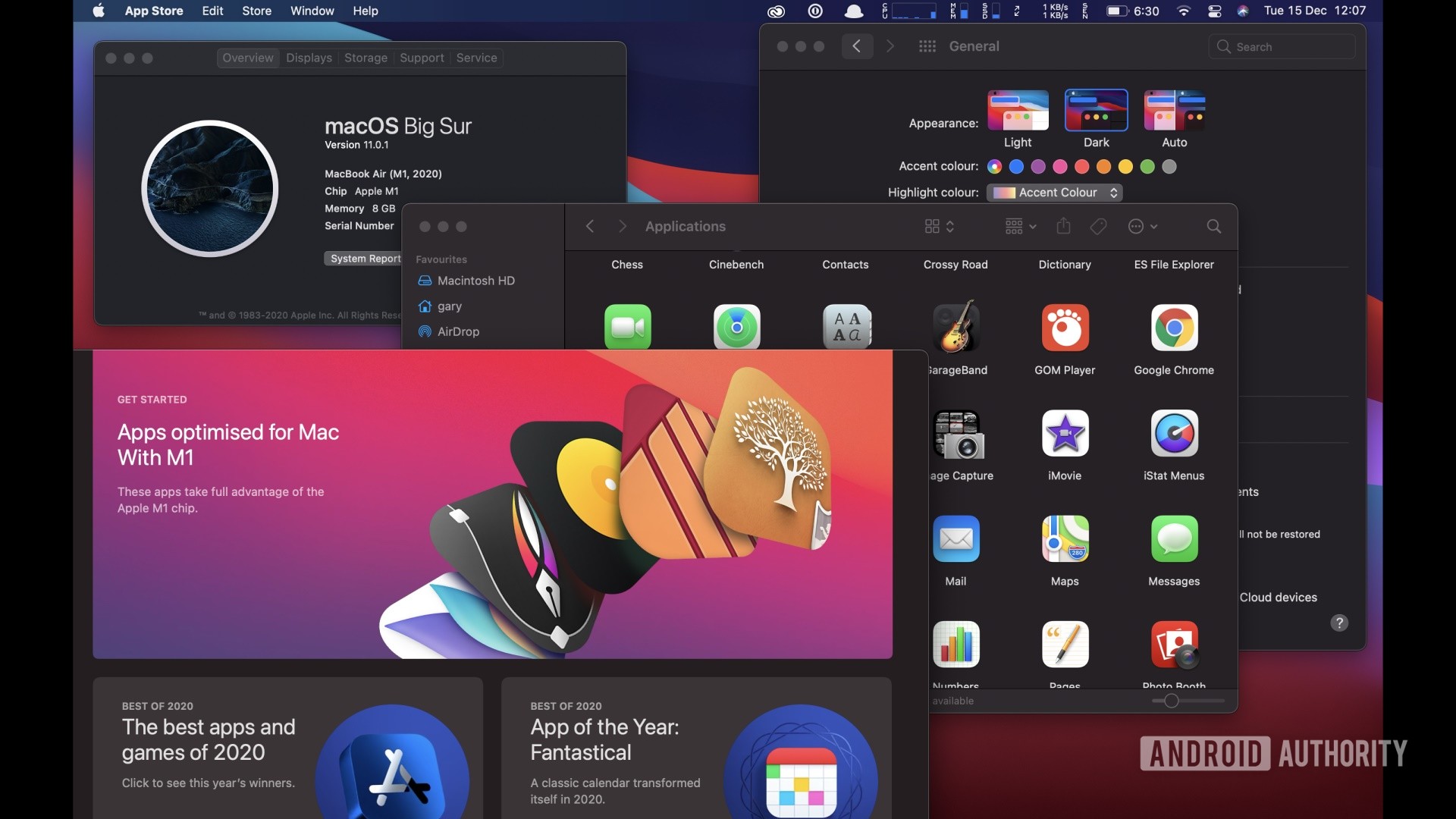
- macOS Big Sur
- Version 11.0.1
The latest version of macOS is called Big Sur. With the change to Apple Silicon, the version number has jumped from 10 (from the OS X days) to 11. While preparing for this review, Apple released an update. It’s just one of many I would guess. Apple has a good track record of fixing bugs and closing security holes on a regular basis.
The company has made lots of cosmetic changes to macOS with Big Sur. This includes things like the floating dock that is now more translucent and has been raised slightly from the bottom of the display. Along with new icons, sounds, and window dressing — literal window dressing. Apple has tweaked the window design to be lighter and more spacious in appearance.
There are other additions like the Control Center. It has made its way from the iPhone to the Mac, and it’s actually quite useful. Safari has also been updated. According to Apple, it is the “biggest update to Safari since its original launch in 2003.” I guess with the move to Apple Silicon the Cupertino company wanted to make sure that Safari was fast, and so it ripped it apart and put it back together for a better overall experience.
More on Apple: iPhone buying guide — which iPhone is right for you?
The Messages app has been upgraded to align more with iOS 14 as well. You can pin conversations to the top of threads and add message effects like confetti or balloons. Creating and sending Memojis is possible on the Mac now too. Group messaging has been upgraded with the ability to respond in a thread. You can also configure the notifications so you only receive alerts when someone mentions you by name.
As I mentioned above, you can now use iPhone and iPad apps. You will find them in the Mac App Store, but you need to click on the new iPhone and iPad Apps tab. Not every application is available, however, as some apps need iPhone specific hardware such as accelerometers or GPS. Plus, developers can opt to not allow their apps to run on the Mac if they already have a Mac-specific version.
How is that camera?
- 720p FaceTime HD camera
The camera? There is one, which is about the most positive thing you can say about it. This 720p webcam is disappointing at best. There was hope that Apple would upgrade the camera in the new MacBook Air, but it didn’t. The basic HD definition is not worthy of 2020. This is especially annoying because laptop manufacturers can no longer claim size is the issue. We have tiny cameras in smartphones, which can create amazing 4K video, but Apple can’t fit a worthy camera in a laptop? Awful.
More: The best phones for taking selfies
What about the audio?
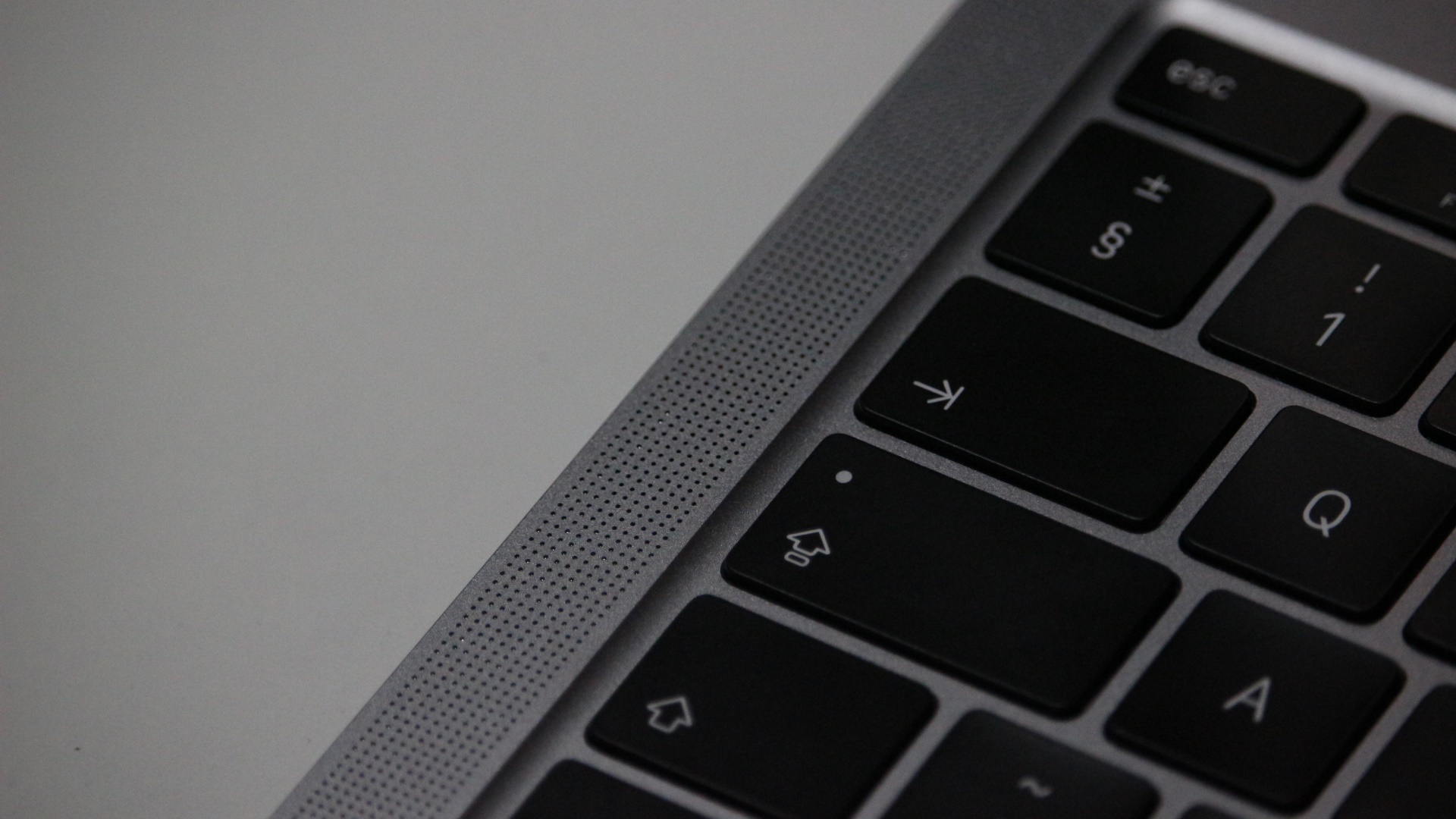
- Stereo speakers
- Wide stereo sound
- Dolby Atmos playback
- Three-mic array with directional beamforming
The M1 MacBook Air has the same basic audio setup as the last Intel-based generation, including Dolby Atmos playback. I am not an audiophile, but as far as laptop speakers go, these work well, considering their size. You will be able to understand sound and enjoy music clearly as long as you aren’t in a loud environment. I appreciate that the sound doesn’t distort even at the highest volume, a weakness of many smaller speakers. The three-mic array works well and is a good feature for video calls too.
If you want more than the built-in speakers, then you can upgrade your audio using the 3.5mm headphone jack. Or you can use one of the Thunderbolt/USB ports, probably with a dock that includes audio options for analog and digital (S/PDIF).
Apple MacBook Air (M1) specs
| MacBook Air (M1) | |
|---|---|
Display | 13.3-inch IPS LED 2,560 x 1,600 Wide color (P3) True Tone technology |
CPU | Apple M1 chip 8-core CPU with 4 performance cores and 4 efficiency cores |
GPU | Apple M1 chip 8-core GPU |
RAM | 8GB Configurable to 16GB |
Storage | 256GB Configurable up to 2TB |
Cameras | 720p Face Time HD camera |
Audio | Stereo speakers Wide stereo sound Dolby Atmos playback 3-mic array 3.5mm headset jack |
Battery | 49.9Wh lithium polymer battery |
Network | 802.11ax Wi-Fi 6 wireless networking IEEE 802.11a/b/g/n/ac compatible Bluetooth 5.0 |
Connectivity | Two Thunderbolt / USB 4 ports with support for: Charging DisplayPort Thunderbolt 3 (up to 40Gb/s) USB 3.1 Gen 2 (up to 10Gb/s) |
Software | macOS Big Sur |
Dimensions and weight | 0.16–0.63 x 11.97 x 8.36 inches 2.8lbs |
Colors | Space Gray, Silver, and Gold |
Value for money and the competition
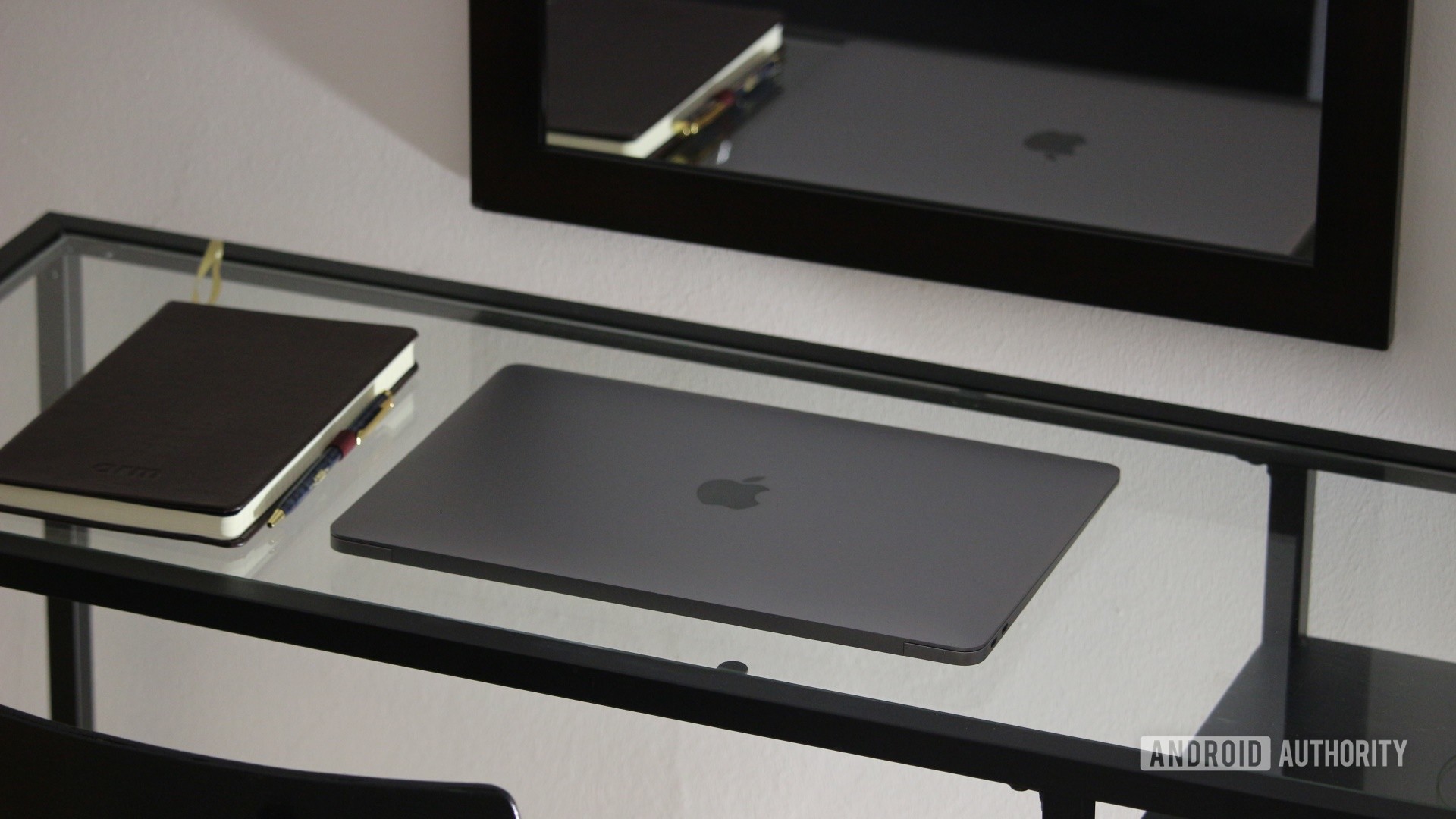
- Apple MacBook Air (M1 Chip with eight‑core CPU, seven‑core GPU, and 256GB storage) — $999
- Apple MacBook Air (M1 Chip with eight-core CPU, seven-core GPU, and 512GB storage) — $1,249
- 16GB RAM upgrade costs $200
- Storage upgrades: 512GB ($200), 1TB ($400), 2TB ($800)
The pricing of the new M1 MacBook Air is similar to those of previous generations. The basic model is under $1,000, and there are lots of options to configure the RAM and storage. A similarly priced Surface Laptop 3 comes with the same about of RAM and storage but uses a quad-core 10th Gen Intel i5-1035G7 processor instead.
For $1,249 you can buy the next model up. It comes with the same 13-inch display and the same amount of RAM. However, the M1 chip is slightly better (eight‑core CPU/eight‑core GPU), and you get 512GB of storage. The $1,249 Surface Book 3 (different from the Surface Laptop 3) comes with only 256GB at that price point.
Of course, you can play the compare and contrast specs game all day long, since the number and variations of Windows laptops is huge. In fact, if you are just looking for a laptop to create simple documents, surf the web, and watch streaming videos, then there are plenty of more affordable laptops and Chromebooks for the casual user.
For some people, $999 or $1,249 is too much for a laptop. You can certainly buy cheaper machines. There is fierce competition from Windows laptops, particularly around that $999 price point. However, it is worth remembering that a MacBook is an investment. I bought my previous MacBook in 2016, and I wouldn’t have upgraded yet if it wasn’t for the temptation of getting a MacBook with an Apple processor. Five years of use are the minimum I expect from a MacBook. I took my old MacBook all over the world and it’s still working well.
Apple MacBook Air (M1) review: The verdict
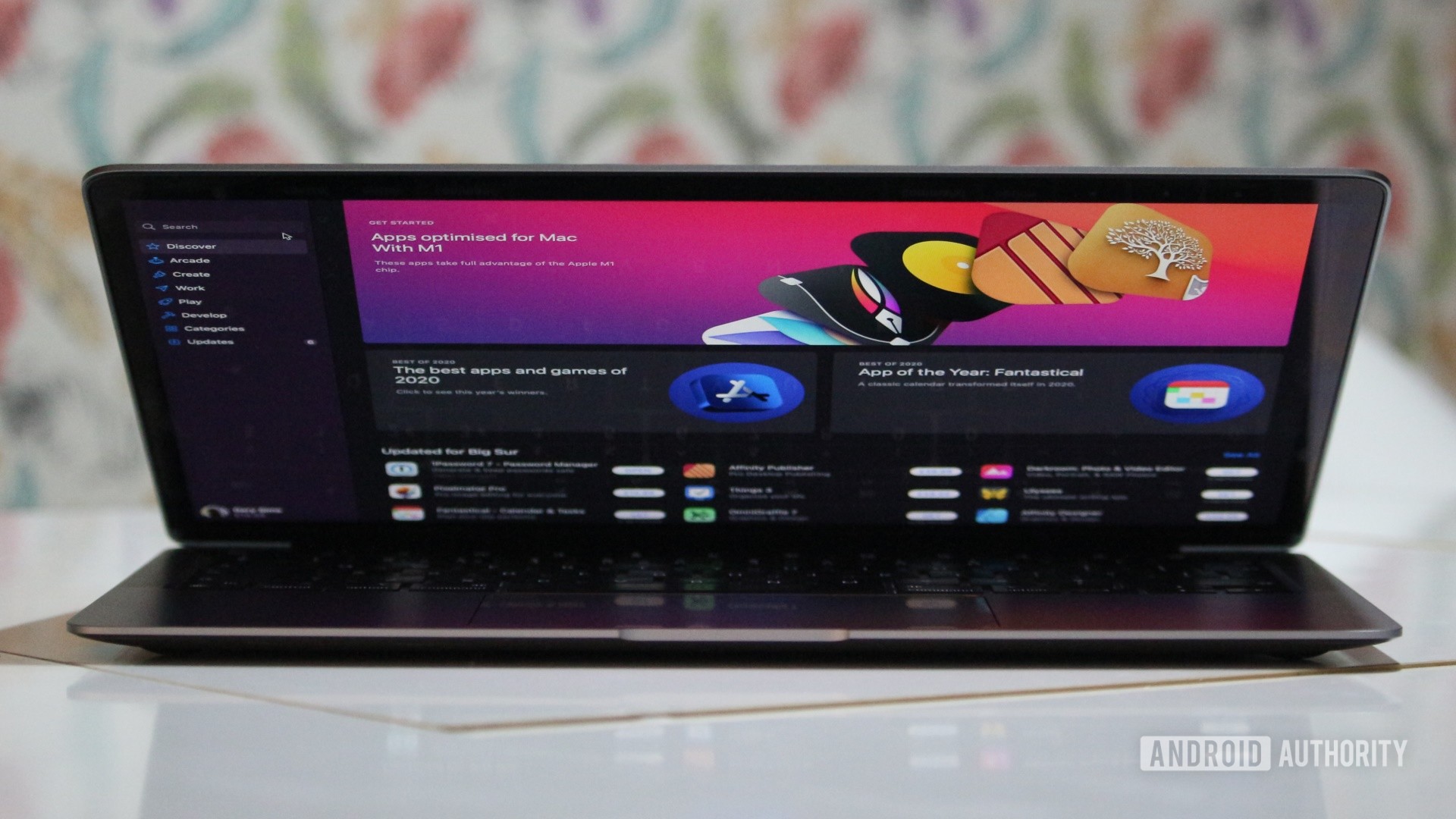
The MacBook Air is certainly a laptop for those who favor a premium experience and don’t care about the price. It is also different from Windows laptops in that you are investing in Apple’s ecosystem rather than the more ubiquitous Windows/PC ecosystem. Personally, I use a Windows desktop but a Mac laptop. I can do that because my workflow (web browser and Adobe’s apps) is available under both Windows and macOS.
One thing is for certain, however. Apple is fully committed to moving all of its Mac lineups to its own silicon. I for one wouldn’t buy an Intel Mac right now unless it was heavily discounted. Some people view the MacBook Air (and the other two M1 devices) as suitable only for early-adopters. I don’t see that myself. Yes, it will be a couple of more months before some third-party apps are running natively, but until then there is emulation. I would double-check the status of any essential apps on Apple Silicon, but I haven’t had any problems myself.
The MacBook Air (M1) is a promising sign of things to come from Apple's laptops.Gary Sims
Should you wait to see what Apple releases next? Maybe. But I doubt we will see a new MacBook Air in the next 18 months, so there is little chance that this model will be superseded any time soon. If you are looking for a power user laptop then maybe wait to see what Apple does with the MacBook Pro 16-inch.
If you aren’t an existing Mac user, is this the time to switch? Yes and no. Yes, in that the power efficiency and the performance of the M1 processor is excellent. No, in that if you are just now starting to learn macOS and discovering the wealth of macOS alternatives to Windows programs, it would be a shame to have your experience tainted by any possible application incompatibilities during the initials stages of Apple’s transition away from Intel.
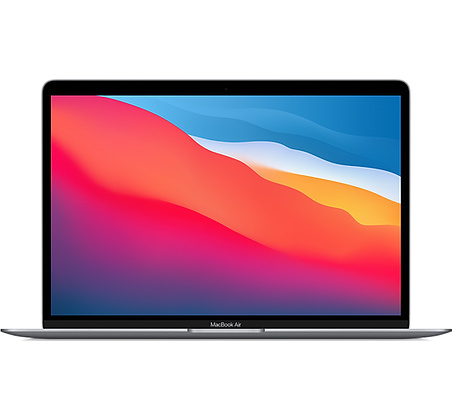
That’s all for our MacBook Air (M1) review. Do you think Apple’s laptop is worth the price?